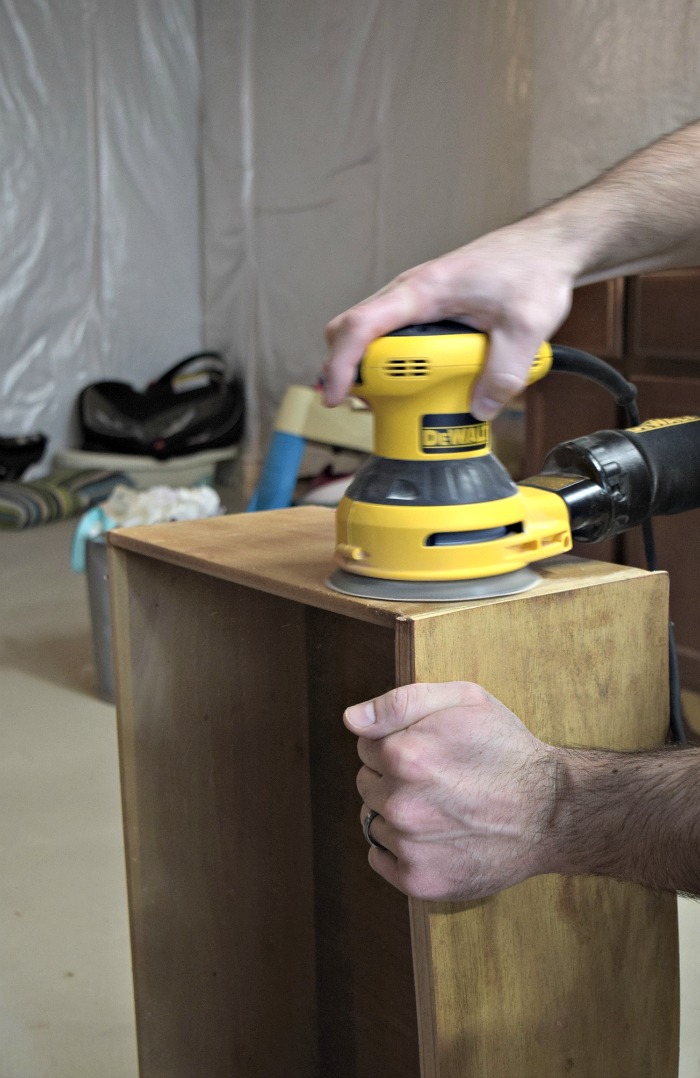Table of Content
With the right tools, preparation, technique and finish, you can achieve amazing results even if you’re a beginner. Another popular option is polyurethane, an oil or water-based sealant that does an excellent job of protecting and waterproofing your furniture. Be sure to choose your preferred sheen, whether matte, satin, or semi-gloss, and work in a space with good ventilation.

It also helps to seal in the paint and prevent chipping or peeling. Roll out the drop cloth cloth or a tarp and place your furniture and any drawers at the center. This will prevent paint splatter or drops from getting onto the ground. More coats of a thinner paint will look better than fewer coats of a thicker paint. Stain penetrates the wood, rather than sitting on top of it, and it allows you to see the natural grain in the wood. It’s a good option if you want to keep the look of the wood but you don’t like the exact shade.
Prepping the Furniture
Let the paint dry for 6-8 hours, depending on the manufacturer's instructions. However, certain kinds of paints, including chalk paint, will dry much faster than that. Don’t wipe off too much paint, or else you’ll end up with brush marks from using a dry brush. Just swipe one side of the brush against the side of the can to ensure the paint won’t drip off of the brush. Elegant colors like cream and gold are a beautiful option for painted furniture in a more formal setting. For smaller projects, like the legs of a chair, you can sand by hand, but if you're working with a larger piece of furniture, like a table or a dresser, use an orbital sander.

If the surface you're painting doesn't have a grain, just work side-to-side. Use a small foam roller or an angled, soft-bristled brush, depending on the size of the furniture and what’s more comfortable for you. You can find tack cloth at any home improvement store or wherever paint supplies are sold. Wear a face mask to avoid breathing in the dust particles from sanding. If you're using an orbital sander, wear heavy-duty gloves and safety glasses as well, to protect yourself from debris.
Five Genius Ways to Recycle Old Furniture With Paint
Sand enough so that the filled portions are flush with the rest of the furniture. I hope this gives you confidence to try restoring a vintage piece! For tips on how I do my vintage hunting, or “junking”, head over and read this.
The less humid the environment, the better, and it shouldn't be too hot or too cold. Most primers, paints, and sealants include instructions regarding ideal temperatures, so refer to the on-label guide. Some people do like to complete painting projects outdoors, which would make spring, summer, and fall ideal times to paint. The best paint for furniture ultimately depends on how you'll use the piece, as well as the aesthetic you want to achieve. Matte finishes are on-trend right now, and create a soft appearance. Meanwhile, eggshell and satin finishes lend a more polished and timeless look, notes Casey.
Why does paint peel off wood?
You may need to apply several coats of paint before you achieve the desired look. Be sure to allow each coat of paint to dry completely before applying the next one. Go over every area of primed surface with a fine-grit sandpaper. This will help your paint bond to the primer even better.

'Begin by painting a piece of furniture one color and then, once it’s dry, paint over it with a completely different second color. Sand back through to the first color and in some areas go back as far as the original wood. With the right color combination, it looks beautiful,' says Annie Sloan. Lots of chalk and mineral paints feature an integrated primer meaning that after a light sanding and a wipe down, you can apply the paint and still achieve a flawless finish.
Aged Finish
Paint fumes can be dangerous if you breathe them in, so be sure to work in a well-ventilated space. Open any windows and doors, or place a fan in the room if that’s not an option. Have someone help you if the piece of furniture is too heavy for you to lift on your own. Even if you decide that you want to replace the hardware with new pieces, go ahead and remove the old ones.

Instead, load your paintbrush with more paint, then put the bristles of the brush down on an unpainted section of the furniture's surface. If you're using an oil-based paint, choose a paintbrush with natural bristles, or opt for synthetic if you're using a water-based latex paint. Opt for chalkboard paint for a super-matte, modern look.
Wait for the first coat of paint to dry , and then hit it with another coat of the same paint. Place drop cloths on the floor, and open any windows and doors to allow plenty of ventilation into the area. Put on a face mask and gloves before beginning the project to protect your skin and lungs. You never want to leave water standing on the wood and the more quickly it can dry, the better. Wipe with methylated spirits to remove any dust or grease. Gone are the days of hastily assembled flatpack and cookie-cutter interiors.
Simply apply the paint and allow it to dry for a smooth, durable finish. Furniture crafted from the wood of salvaged fishing boats inspired this four-color paint technique. You’ll brush on a base coat in one shade, then layer on others and scrape or sand to get the desired effect when the paint is 90 percent dry.
After your last coat of paint has been dry for atleast 24 hours, you can weigh your options for sealing it. Latex paint takes on average 3 weeks to fully cure so don’t put anything on the furniture that could damage the finish until that time period has passed. Keep pets away from the furniture while the paint is drying. Paint fumes can be dangerous to many pets, so it's best to keep them out of the area. Furthermore, a curious sniff from the family pet could be all it takes to get fur or dander in the wet paint, leaving fuzz that will show on the finished piece. Use light, smooth strokes with a brush, and try to use as few strokes as possible to avoid leaving brush marks in the paint.


No comments:
Post a Comment